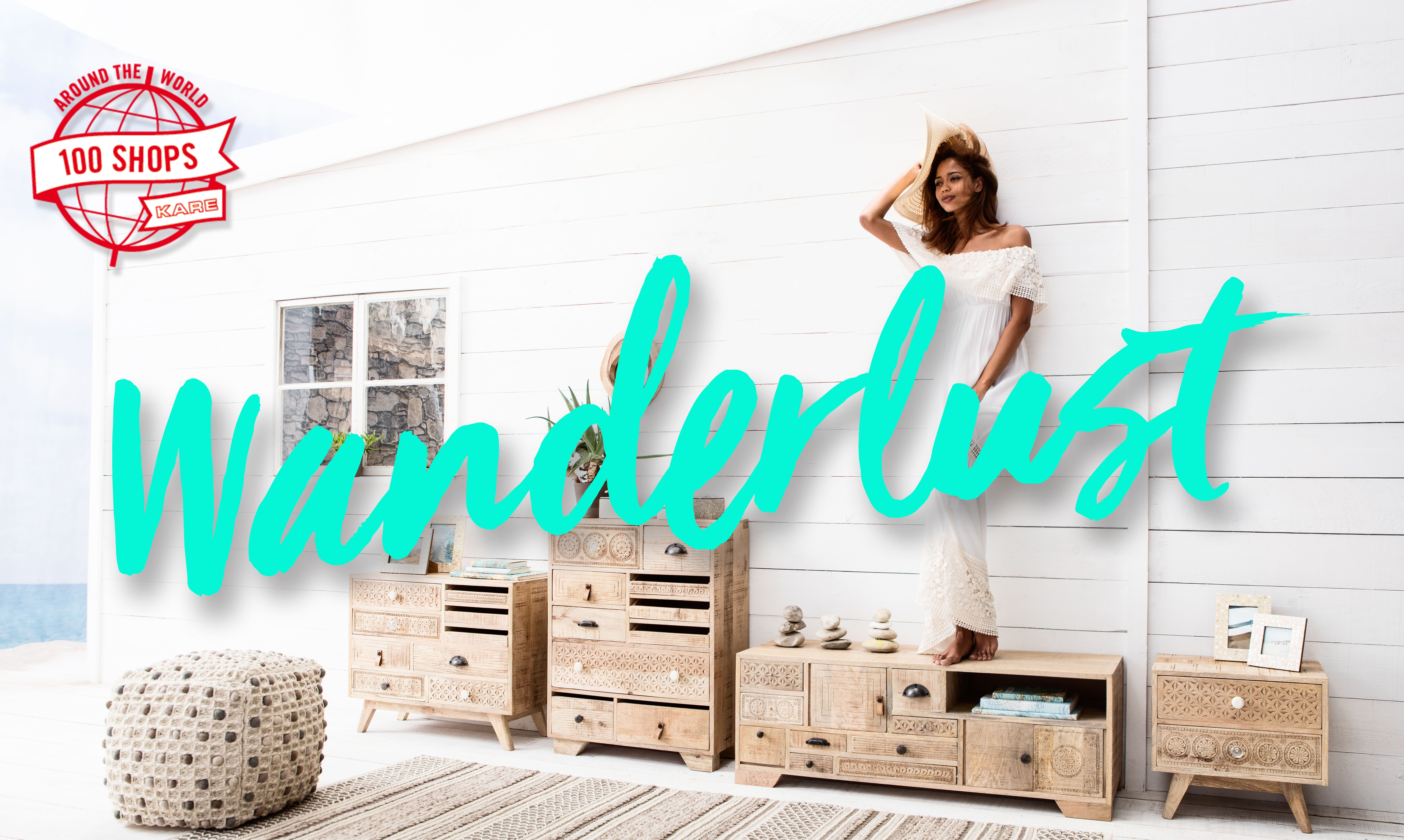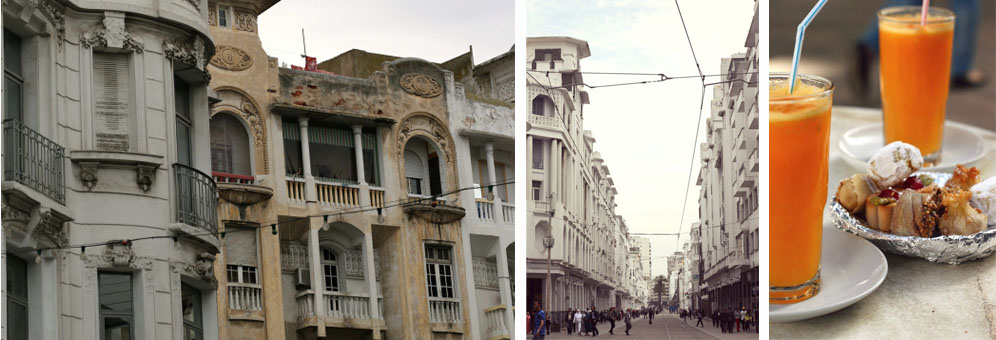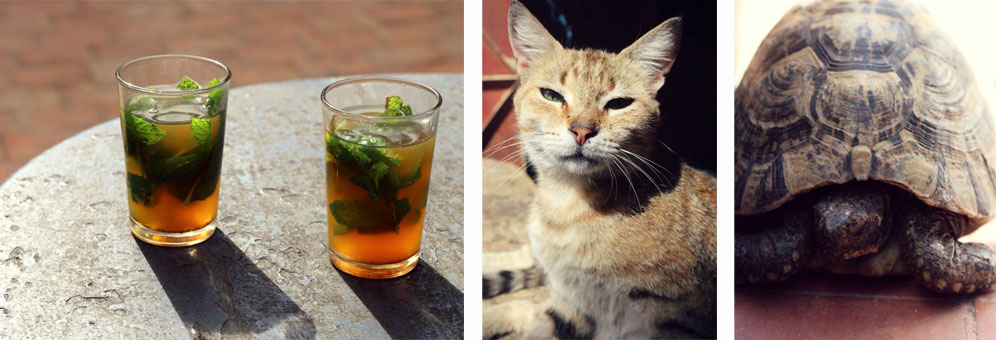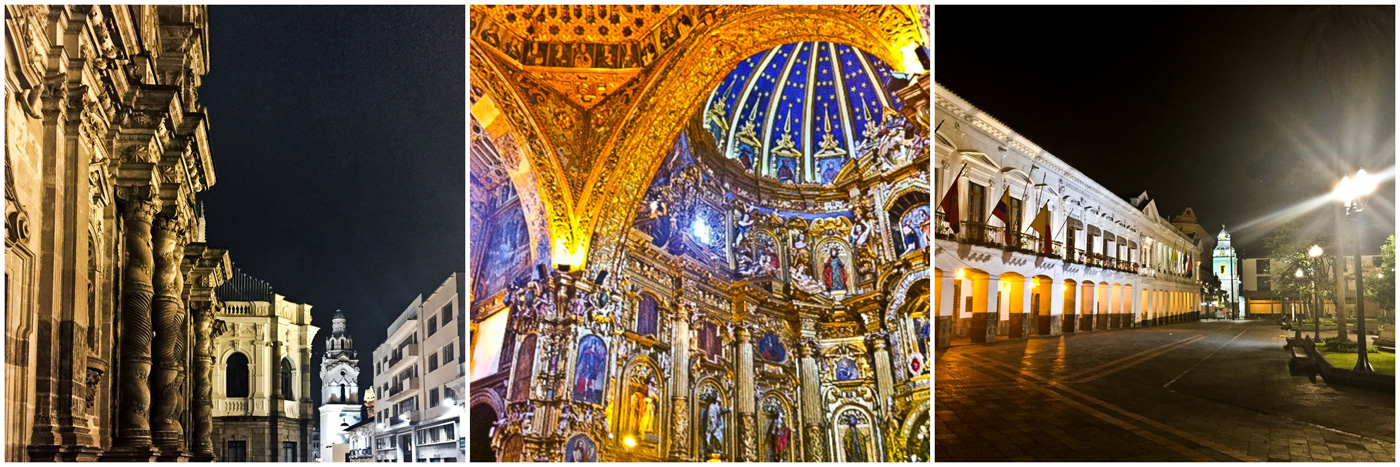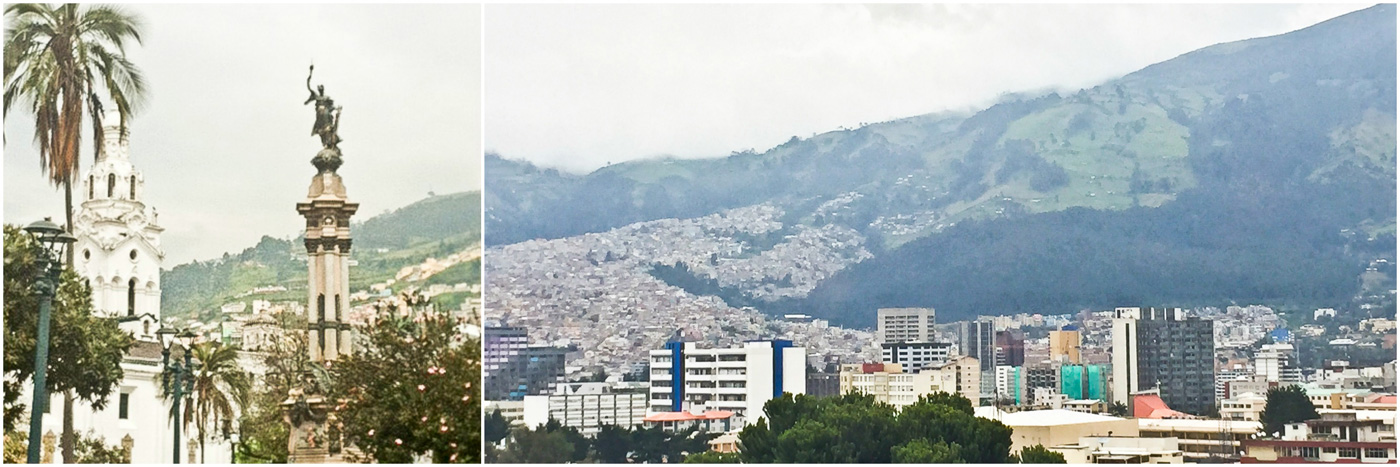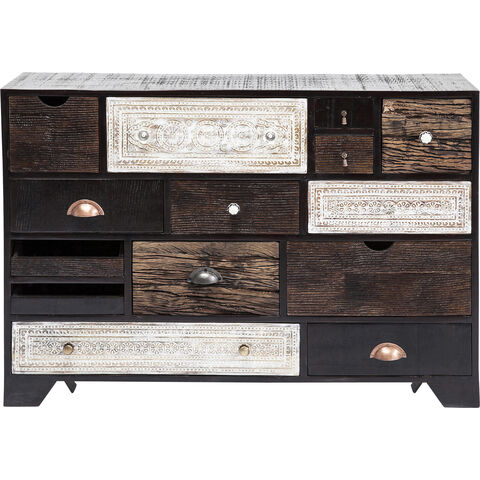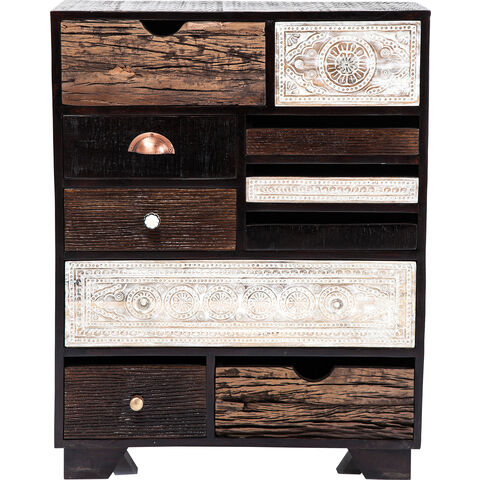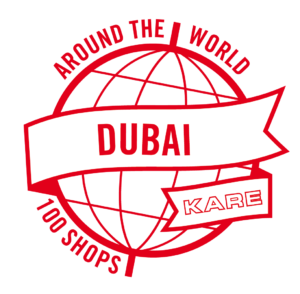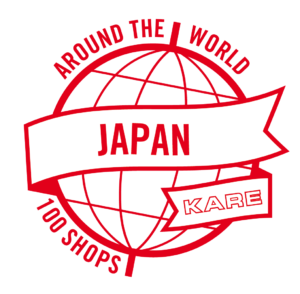Wanderlust
28. August 2018
When wanderlust calls, it doesn’t have to be the Caribbean. A small makeover in your own four walls makes the holiday feeling last even longer. We got a little inspiration from some of our 100 KARE Shops worldwide, some of which provide stylish living where many of us go on holiday. For the anniversary of our 100 shops we bring the world to your home! Discover secret tips from our local partners, fresh furnishing ideas and irresistible design offers for the vacation feeling at home.
Casablanca – modern and traditional
We arrive in Casablanca, Morocco’s biggest city, in the morning and try to wave down a taxi. There are no traces of the cult film of the same name here, however. Present-day Casablanca is an industrial city. In Morocco the taxis are of a different color in every city, and in Casablanca what we are looking for is red.
Together with Ms Jihad Elyouns, who manages KARE Casablanca, we take a walk around the port, the largest in North Africa. There’s no better place to eat freshly caught fish, accompanied by a glass of freshly squeezed orange juice, which tastes fruitier and sweeter here than anywhere else.
Duly fortified we set off to the first destination on our tour: Hassan II mosque is Casablanca’s top attraction. We are impressed not just by its incredible size, but also by the many elaborate details which decorate this magnificent edifice, including the most intricate mosaics stretching as far as the eye can see. In the courtyard we spend a few minutes marvelling at the minaret before being led by a guide through an impressive archway into the interior. The prayer hall alone can accommodate 25,000 people!
The core of every Moroccan town is the ‘medina’, explains Jihad Elyouns. This is the old quarter surrounded by the historical city walls, in which you can experience the country’s traditional hustle and bustle. In particular you will find a fascinating market here, where everything is available which the traditional or contemporary Moroccan heart can desire: from olives to mobile phone cases. So we enter the medina of “Casa”, as the locals affectionately refer to their city.
There are irresistible aromas coming from the vegetable stalls, and we’re soon ready to try a further Moroccan dish. We order a tagine, a traditional dish prepared in the cooking pot of the same name with the funnel-shaped lid. We order a vegetarian tagine with couscous, together with braised lamb and vegetables. The fact that all the ingredients are cooked together in the clay cooking pot means that the aromas combine to form a delicious dish which we will be sure to order several times more.
To round off the meal there is the traditional ‘thé à la menthe’, a sweet tea brewed ceremonially from fresh mint. As we drink our tea we stroke the restaurant cat, one of the many well-fed moggies we notice wandering around.
And there is one more domestic pet – in Moroccan households a tortoise is as common as a dog or a rabbit in our own homes.
And so we continue on our way through the streets with the white houses which give Casablanca its name. We are impressed by the interplay between the modern and the traditional which you find here at every level. Opposite Notre Dame de Lourdes Cathedral we find a highly modern interpretation of the Moroccan archway. The cathedral itself as a modern building with wonderfully beautiful glass mosaics which plunge its interior into a magical light.
We are overcome by the many sights, smells and sounds of the city. “Casa” is a modern city which is home to the automobile industry, banks, universities and football clubs.
We end the day with a luxurious dinner accompanied by live piano music in Rick’s Café, which we know from our beloved movie “Casablanca”. By the way, it is based on the restaurant in the film, and not the other way around. Wine is served here, which can’t be taken for granted everywhere in Morocco.
After oysters, goat’s cheese with lavender and honey and a fish tagine, we order a Moroccan orange salad for dessert, which consists only of the country’s own tasty oranges, a little cinnamon and mint. The perfect end to an opulent dinner!
This is how a day in Casablanca ends, and shortly after one of the precious red taxis stops to pick us up we fall into bed after another glass of mint tea in our ‘riad’ (a traditional small family hotel with a courtyard).
And how do people live in Morocco? “It varies, like everywhere else. In general the whole extended family lives under the same roof, because families are very close here. We tend to furnish our homes in the modern style – the traditional tiles, golden fittings and oriental arches tend to be found more in tourist hotels or traditional homes. However, glossy modern furniture really appeals to us – we furnish our homes colourfully and with modern eggshell chairs, for example, and we also really appreciate modern technology. I hardly know anyone who has less than two mobile phones!”
Ecuador – ¡Qué chévere!
Another highlight on our trip around the world. Visiting a stunning beautiful countryside that even fascinated Darwin. It’s one out of 17 Megadiverse-Countries –with a genuine love for Mother Nature, the protection of the whole environment is part of their constitution, and you will see and feel it all around. Despite its relatively small size Ecuador is home to an astounding array of wonders that include picturesque colonial towns, Amazonian rainforest, the spectacular peaks of the Andes, two vulcanos and of course the fragile but alluring Galápagos Islands. It’s almost indescribable.
Let’s start in a truly special town: Ecuadors‘ capital Quito. Fun fact: 2,850m above sea level it is the highest official capital city in the world. We have booked a neat and familiar hostel in the Old-town San Blas. With their great amount of churches, splendid palaces and monastery gardens full of corners, idyllic patios, cafes and museums – it is the most interesting of whole Southamerica.
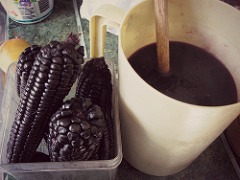 After a great tasting breakfast we leave the Jumbo Lodging and drive to the center of Quito with both, rain jacket and our swimming suit. It’s kind of a wise decision, if you take a look over the green hills up to the snow-covered summits of Pichincha or Tungurahua. We take a cab, but you can also easily go by bus (1 Dollar for 1 hour). We do not recommend driving on your own, cause of aggressive drivers, poor road conditions, often long distances between tour destinations and car thefts.
After a great tasting breakfast we leave the Jumbo Lodging and drive to the center of Quito with both, rain jacket and our swimming suit. It’s kind of a wise decision, if you take a look over the green hills up to the snow-covered summits of Pichincha or Tungurahua. We take a cab, but you can also easily go by bus (1 Dollar for 1 hour). We do not recommend driving on your own, cause of aggressive drivers, poor road conditions, often long distances between tour destinations and car thefts.
15 minutes later we arrive at Miguels (shopowner of KARE Quito) beloved restaurant Achiote. We first have our well deserved Batido(kind of a great tasting milkshake). With Miguel we instantly go into raptures about the culinary diversity. He gives us useful advice, what we really need to try. Chicha Murada is hard to get used to. It’s a drink made of ferment black corn. But you have a great amount of exotic juices made of tree tomatoes or Naranjillas for example. When we told Miguel, that the food offered in the hostel really tastes great, but the coffee is a bit watery – he almost laughed hisself to death. It is irony of history that in a land with the finest coffee beans you often consume instant coffee, most in the countryside. The diversity of the landscape also reflects in the multifariously food. On the one side you have the Andes, Miguel tells, where the local population favours corn and potatoes. Try Llapingachos (kind of pan cake made with potatoes and cheese). You might also know the popular Quinoa – also roots in the Andes. Miguel is quite enthusiastic about Ceviche (raw marinated fish or seafood), consumed in the coastal regions. We recommend to all Europeans: Cuy (grilled guinea pig). Enough talking about food…
Miguels Ecuador-Tips:
– Hike to the volcano Pichincha: http://de.wikiloc.com/routen/wandern/ecuador/pichincha
- Restaurant Achiote: http://achiote.com.ec/home/
- Jumbo Lodging Hostel: Esmeraldas E4-86 y Los Rios, Quito – Ecuador. Tel (00593-22) 281 750 (nach Luis fragen). Email: jumbolodging@hotmail.com www.jumbolodging.viviti.com
Go visit our shop in Cumbayá!
Av. Pampite Oe3-93 y Antonio Salguero | Cumbayá – Quito, Ecuador| info@kare-cumbaya.com | Tel +593 22 2892481 | https://www.kare-design.com/ec/en/
Miguel takes us to his KARE Store. His breast swells with pride as we arrived at this scarlet, detached Shop built with love for detail. Fred greets us at the entrance. Miguel can’t wait to show us his personal highlight – the coffee table. To him it means a lot more than just furniture to rest your feet or throw your keys. He tells us, for the people raised up in his country, it is the center of all happenings. The family gathers around it, talking, drinking, eating – simply having a good time. You just have to be aware of the right size in comparison to your roomsize. Another trend in Ecuador 2016 are earthy tones and materials like wood, metal and leather. People attach importance to organic products, like deciduous woods, especially the dark ones are very popular. He gives us some useful tips for smaller apartments: use neutral colors (less than four), light (weight and color) carpets combined with glamorous accents in gold and copper. If you prefer it a bit more cosy – just focus on warm, dark keypieces.
Welcome to my DUBAI
Coffee with camel milk, the shocking pink taxis “Girls only” run by women for women, falafels from food trucks, winding old town streets – Dubai can be different. The former fishing village has become a giant metropolis in the Persian Gulf. Usually we know it as a place of superlatives and as a holiday destination with sun guarantee. The oil provides the endless wealth of the Emirates. Luxury hotels, giant shopping malls, the Burj Kalifa (828 meters) as the highest skyscraper in the world, artificial islands that will even get artificial snow one day – these projects are featuring the image of the desert metropolis. In Dubai tradition and progress is no contradiction. For example, when it comes to the self-determination of women: The city counts around 4,000 self-employed female entrepreneurs and more and more women rely on vocational training and job before they assume a traditional role in the family.
Nothing is impossible is the philosophy of our KARE partner in Dubai City. At now three locations in Dubai surprise the young, spoiled and international audience of the megacity with living ideas – far beyond mediocrity – in the Mall of the Emirates and Mirdiff Mall. The third spectacular, 700-square-foot KARE shop recently opened in the bustling Oud Metha district in the neighborhood of trendy restaurants, luxury apartment buildings and popular hotels.”All over KARE” is Georges Meouchys credo. He is the always smartly dressed manager of the new KARE shop. “We in Dubai love interior design that follows an idea, which is then implemented consistently in each room.” Boring unit solutions are not what Georges means, because in Dubai the representative and exceptional character of the apartment or the house plays a larger role as in Europe.
Our tips for your trip to Dubai
# 1 Arabian Tea House Café Authentic: The ideal place to chill out beyond the typical superlatives of the town is located on the edge of Bastakja district. A nicely decorated and quiet courtyard, tee and local specialties. The falafel is amazing. (Al Fahidi St – Dubai) # 2 Zengo For chic nightlife and as a part of Le Royal Meridien Beach Resort, the Zengo is perfect to watch the truly colorful folk for the whole evening. Close to the marina – with bars, restaurants and lounges. http://www.zengo-dubai.com # 3 The Food Truck Dubai Get some fruit smoothies and healthy snacks at the food truck: An alternative to the luxury lifestyle of Dubai City. Check the menu and locations on Facebook and schedule this special stop in your sightseeing tour.https://www.facebook.com/TheFoodTruckDubai/
KARE Shops in Dubai:
KARE | Oud Metha Road (Dubai, UAE) | Tel: +971 4 609 7555 / +971 4 347 6882 | headoffice@kare-dubai.com KARE at IDdesign showrooms | Mall of the Emirates | City Centre Mirdif | Deira (Al Ittihad Rd) | Al Wahda Mall | Dalma Mall
Big in Japan!
Like every country we have been visiting since now, Japan is a special one. We have seen so many curious and astonishing than in any other country. The people there were incredibly polite and complaisant, so that concerning the term “land of smiles” Japan is almost competing with China.
 We are going to make a tiny roundtrip in Japan because it is imperative to visit five KARE stores from Tokyo to Osaka. It may not be suitable but still interesting – the toilets in Japan are very customer-friendly, steadily clean and as soon as you are entering the cabin there’s a pleasant sound of swoosh, coming out from the integrated speakers – to drown possible noises, of course. You could also understand this figuratively – one is making an effort to show maximal comfort and politeness – regarded in interpersonal matters. Despite we are not understanding or speaking any word Japanese it was incredible easy for us to find the right train back home to our apartment – thanks to the friendly support. There is not a bit of scramble at the train station and despite the fact that the trains are fully loaded, nobody is swearing, squeezing or moaning. Besides that, one is not barging against somebody and there is nobody who is unpredictably stopping in the middle of the way and starring at the ceiling. When entering the apartment there’s something we are immediately realizing – we are taller than most of the Japanese – tower them by at least 10cm with our height of 170cm, which couldn’t only be noticed by the length of Japanese beds (yes, we had a bed, not a Tatami). If we had like to take a bath we would be forced to fold our selves in order to fit into the bath tub – but a foot bath is nice though. Our apartment is located in the center of Nishi-Shinjuku. 15 minute – walk to Shinjuku’s very popular entertainment district: Kabukicho. A little bit like the German Reeperbahn.
We are going to make a tiny roundtrip in Japan because it is imperative to visit five KARE stores from Tokyo to Osaka. It may not be suitable but still interesting – the toilets in Japan are very customer-friendly, steadily clean and as soon as you are entering the cabin there’s a pleasant sound of swoosh, coming out from the integrated speakers – to drown possible noises, of course. You could also understand this figuratively – one is making an effort to show maximal comfort and politeness – regarded in interpersonal matters. Despite we are not understanding or speaking any word Japanese it was incredible easy for us to find the right train back home to our apartment – thanks to the friendly support. There is not a bit of scramble at the train station and despite the fact that the trains are fully loaded, nobody is swearing, squeezing or moaning. Besides that, one is not barging against somebody and there is nobody who is unpredictably stopping in the middle of the way and starring at the ceiling. When entering the apartment there’s something we are immediately realizing – we are taller than most of the Japanese – tower them by at least 10cm with our height of 170cm, which couldn’t only be noticed by the length of Japanese beds (yes, we had a bed, not a Tatami). If we had like to take a bath we would be forced to fold our selves in order to fit into the bath tub – but a foot bath is nice though. Our apartment is located in the center of Nishi-Shinjuku. 15 minute – walk to Shinjuku’s very popular entertainment district: Kabukicho. A little bit like the German Reeperbahn.
Since we are going to meet Kitamuro (KARE Japan’s shop manager) on our first day, we are searching a suitable bar and a fast food restaurant on our own. That’s quite easy – the variety of noodle soup restaurants is huge. Here we literally order what we like best. The specific dishes are rebuilt in plastic and displayed with numbers and a variety of Japanese letterings. As soon as one has chosen a dish you can order and pay at an automat with the related dish number. After that, you get a bon which we deliver at the entrance, then our snap-frozen selves get seated. Thanks god we’ve ordered hot soup. We assume that we can see our breath – at a temperature drop by about 20 degrees. Likewise astonishing – one’s allowed to smoke in the most bars and restaurants – solely on the streets there’s a strict prohibition with high fines. We are spending the rest of the evening in the world-famous metal bar Godz. This is no joke – seriously world-famous when you are considering all these signatures of bands from all over the world on the walls, during a Gin Tonic (beer is as expensive as a Gin Tonic, in other words, either you get a beer for 7€ or an equal sized long drink). 
On the next day we are up to Shibuya and Harajuku in order to visit the KARE Store, which is located in a building named Seibu (a huge luxury department store), and meet up with a colleague of Kitamuro, Aya Ito. Shibuya is above all loud! – in every perspective. The world’s biggest junction (Shibuya Crossing) is treated with ultrasound animated advertisements. We are wriggling ourselves along the crowd of people until we reach the Seibu building. That’s where we meet Aya Ito, who is inviting us to a traditional Korean BBQ. While we are snugly kneeling besides the table and eating beef aorta and Kobe beef tenderloin, she is telling us about the Japanese live culture, their way of interior style and is excusing Kitamuro’s absence several times.
“We are very helpful, that’s right. That’s part of our mentality. When somebody accidentally leaves some money or other valuables behind, we get it for the person who has lost it. When my friends and I were in Canada, we placed our handbags on a chair in order to reserve it, but people were shaking their heads and I was not even aware. Here it’s natural.” She is giggling a little bit, pulls her notebook out and begins to write: “What I really need to recommend is our artificial island Odaiba. From the 115 meter high Ferris wheel you have a stunning view over the illuminated Tokyo by night. Furthermore, we have a little beach section, a life-sized Gundam (Transformer) and a copy of the Statue of Liberty.
 A wonderful day trip is beginning from the Senso-Ji temple in Asakusa, where you can explore a part of the old Tokyo, further on directly to Odaiba by waterbus. In case you are interested in Anime, a trip to Electric town is totally worth visiting. There you can see huge skyscrapers filled with thousands of Manga figurines and gambling dens. Only a few train stations apart there’s also a well worth seeing market (Asaichi) with fresh Sushi from the morning Tsukji fish market.” There’s so much you can discover in Tokyo – Ito San’s to-do list seems to have no end. From cat cafés via the zoo in Ueno and the disused Japanese Disneyland version through to wonderful gardens and parks, like for example the Yoyogi-park with the Meiji Jingu shrine. Only when asking a question regarding the imperial palace she is shaking her head. “Should you want to, sure, but for tourists it’s not worth seeing because you merely can’t see anything. You can’t enter most of the palace and the related park, because the imperial couple is living there and wants to maintain their privacy. Only once a year they are opening their doors. But enough of that – let’s get down to business, the Japanese way of interior style. Kitamuro has some things noted down for me, which I don’t want to deprive. We Japanese are strongly connected to our faith, which you cannot only see by the countless temples in the city, but is also shown in our way of interior style. We try to align our interior design to the, also in Europe well-known, Feng-Shui. Furthermore, we love it clear, structured and tidy. We also love natural materials and fabrics like wood, wool and earth tones. Since we are often limited by the size, or to put it in another way, by the tidiness of our apartments, we attach value to the functionality of our furniture. Another trend from Harajuku’s youngsters is for sure very contrary. They like it colorful, fluffy and freaky – it can’t be crazy enough.” As we hear this we are nodding in agreement. Harajuku is for indulging in reminiscences of your childhood and about shopping all possible stuff and kitsch you can only imagine, which we did in a sense of color intoxication. We bought things we never – really never ever – would have taken a gander at, back home. Ito-San is laughing and finally says: “KARE is connecting the two existing worlds in Japan and makes it one. Here it becomes possible that every taste and every facet is satisfied. And yes, here one is buying a red sofa and is not only glancing at it.” She laughs.
A wonderful day trip is beginning from the Senso-Ji temple in Asakusa, where you can explore a part of the old Tokyo, further on directly to Odaiba by waterbus. In case you are interested in Anime, a trip to Electric town is totally worth visiting. There you can see huge skyscrapers filled with thousands of Manga figurines and gambling dens. Only a few train stations apart there’s also a well worth seeing market (Asaichi) with fresh Sushi from the morning Tsukji fish market.” There’s so much you can discover in Tokyo – Ito San’s to-do list seems to have no end. From cat cafés via the zoo in Ueno and the disused Japanese Disneyland version through to wonderful gardens and parks, like for example the Yoyogi-park with the Meiji Jingu shrine. Only when asking a question regarding the imperial palace she is shaking her head. “Should you want to, sure, but for tourists it’s not worth seeing because you merely can’t see anything. You can’t enter most of the palace and the related park, because the imperial couple is living there and wants to maintain their privacy. Only once a year they are opening their doors. But enough of that – let’s get down to business, the Japanese way of interior style. Kitamuro has some things noted down for me, which I don’t want to deprive. We Japanese are strongly connected to our faith, which you cannot only see by the countless temples in the city, but is also shown in our way of interior style. We try to align our interior design to the, also in Europe well-known, Feng-Shui. Furthermore, we love it clear, structured and tidy. We also love natural materials and fabrics like wood, wool and earth tones. Since we are often limited by the size, or to put it in another way, by the tidiness of our apartments, we attach value to the functionality of our furniture. Another trend from Harajuku’s youngsters is for sure very contrary. They like it colorful, fluffy and freaky – it can’t be crazy enough.” As we hear this we are nodding in agreement. Harajuku is for indulging in reminiscences of your childhood and about shopping all possible stuff and kitsch you can only imagine, which we did in a sense of color intoxication. We bought things we never – really never ever – would have taken a gander at, back home. Ito-San is laughing and finally says: “KARE is connecting the two existing worlds in Japan and makes it one. Here it becomes possible that every taste and every facet is satisfied. And yes, here one is buying a red sofa and is not only glancing at it.” She laughs.
Kitamuro’s tips for the ultimate Japan-trip:
- Odaiba: an artificial island in the bay of Tokyo
- Electric-Town or Akihabara: the heart of Japan’s electronic trade as well as Otakus, SEGA-World, Anime, Manga und Merchandise. Here you can find the popular Maid cafés: if you ever wanted to get your rice with omelet in the shape of a teddy bear is just right here!
- Yoyogi Park: especially on Sundays lots of locals meet up here to spend their day in the park, make some music, dance or just lean back.
- Nara Dreamland: a former amusement park nearby the town Nara
- Harajuku: wonderful for shopping and strolling around: Takeshita Street, 1 Chome Jingumae, Tokyo 150-0001, Japan
- Godz: Metal bar, 1 Chome-10-5 Kabukicho, Shinjuku, Tokyo 160-0021, Japan
- Osaka: beautiful city during the cherry blossom season and the Hanami feast in the beginning of April: Kema Sakuranomiya Park, Tsurumi Ryokuchi Park and Burgpark Osaka
- Osaka: Dotonburi – entertainment district similar to Kabukicho
- Osaka: Universal Studios Japan
Visit our KARE Shops in Japan!
KARE FLAGSHIPSTORE LIVING HOUSE. Salone
3F, 2-4-15, Minamihorie, Nishi, Osaka, Osaka, 5 5 0 – 0 0 1 5, Japan
T E L : 0 6 – 6 5 8 5- 7 2 2 0
E – M A I L : salone@livinghouse.co.jp
fixed holiday: Tuesday
Opening Hours : Mo- Sun 1 1 : 0 0 ‐ 1
KARE SEIBU-SHIBUYA
B1F, towerB, SEIBU-SHIBUYA, 21-1, Udagawacho, Shibuya, Tokyo, 1 5 0 – 8 3 3 0, Japan
T E L : 0 3 – 3 4 6 2 – 3 6 3 9
E – M A I L: info@livinghouse.co.jp
fixed holiday: open 365 days a year (Other than the year-end and New Year holidays)
Opening Hours: Mo- Sa 10:00-21:00
Sun, publicholiday 10:00-20:00
KARE LAKETOWN
KAZE2F, Ion Laketown, 4-2-2, Laketown, Koshigaya, Saitama, 3 4 3 – 0 8 2 8, Japan
T E L : 0 4 8 – 9 4 0 – 2 0 5 2
E – M A I L : laketown@kare-japan.com
Opening Hours: Mo- Sun 9:00-22:00
KARE NAGOYA
6F, lachic, 3-6-1, Sakae, Naka, Nagoya, Aichi, 460-0008, Japan
TEL:052 – 259 – 6573
fixed holiday: Pursuant to the facility
Opening Hours : Mo- Sun 11:00 – 21:00

